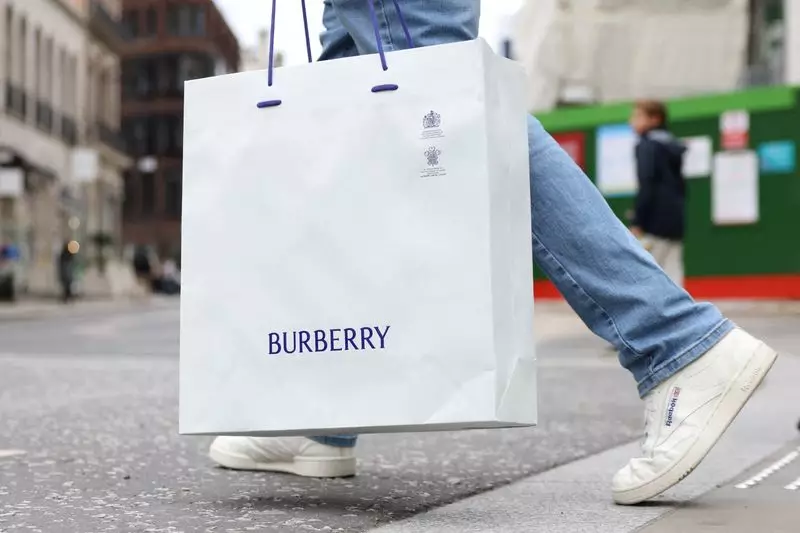Burberry has reported a lesser-than-anticipated decline in quarterly comparable store sales, showing a 4% dip rather than the foreseen 12%. This news emerges as welcome relief for the British luxury brand and its stakeholders, hinting at an uptick in consumer confidence within the luxury market. The modest drop indicates a crucial turning point for Burberry as it strives to regain footing in an industry characterized by fluctuating demand. The brand’s performance, particularly in the United States during the holiday season, has drawn attention and optimism across the sector, leading to a notable surge in its stock prices.
The investor reaction was swift and positive, with Burberry’s shares soaring by approximately 12% following the announcement. The overall uplift in the luxury sector was palpable, with rival conglomerate Kering’s shares rising 8%, while LVMH also enjoyed a 3% increase. Such market reactions underscore a growing belief that the tide may be turning for luxury brands that had been grappling with diminished demand in recent years.
Burberry’s CEO Joshua Schulman has expressed satisfaction with these results, especially highlighting the positive reception of their strategic holiday advertising campaigns. Rather than diversifying into lesser-known products, Schulman’s focus has shifted towards reinforcing Burberry’s iconic offerings—namely, its trench coats and cashmere scarves. The emphasis on widely recognized items is widely considered a prudent move aimed at regaining customer loyalty.
The new marketing strategy emphasizes accessibility and familiarity, positioning classic products front and center. Schulman reflects on this fresh direction as critical in attracting a diverse demographic of consumers. The successful performance of their cashmere scarves, priced between £420 and £990, is indicative of a renewed consumer willingness to invest in high-end items. This shift promises to bolster Burberry’s brand appeal and desirability over time.
Notably, analysts at RBC view these developments as the initial markers of a constructive recovery path. Recent strong performances from luxury brands like Richemont and Brunello Cucinelli further bolster the narrative that demand within this exclusive market is indeed strengthening. Investors now harbor a growing optimism about the potential for long-term recovery for lagging brands, including Burberry.
Regions globally have shown signs of improvement, albeit at varying rates. The Americas segment, particularly New York, has emerged as a sales success for Burberry, driven by the opening of a newly refurbished flagship store. This strategic location has facilitated a 4% growth in sales within the region. Meanwhile, Burberry’s pricing strategy for high-ticket items—including a luxurious $13,900 women’s trench coat—highlights a deliberate effort to align product offerings with luxury market demands.
Asia Pacific, while still exhibiting a 9% sales drop, marks a notable recovery when compared to the prior 28% decline. In contrast, sales across Europe, the Middle East, India, and Africa contracted by only 2%, signaling a substantial recovery from previous downturns. Such signs are crucial for the brand, particularly as it navigates critical markets like China, where consumer demand is slowly stabilizing. The company’s new store in Beijing symbolizes growth potential in such key locations.
Renewed consumer interest and stepped-up sales strategies have led Burberry to suggest an optimistic outlook for their financial year. After incurring an adjusted operating loss of £41 million in the first half, the company now expresses confidence in potentially achieving profitability. This prospect hinges not only on the improved sales performance but also on the inventory management strategies employed, including markdowns to facilitate stock clearance.
As Burberry prepares to showcase its Autumn/Winter 2025 collection at London Fashion Week, the anticipation surrounding the brand’s next steps is palpable. The potential for rejuvenation in consumer enthusiasm—and consequently the luxury market overall—reflects a promising horizon for Burberry as it re-establishes itself in a competitive landscape. The challenges remain, but the path seems clearer and more encouraging than it has in recent times.

